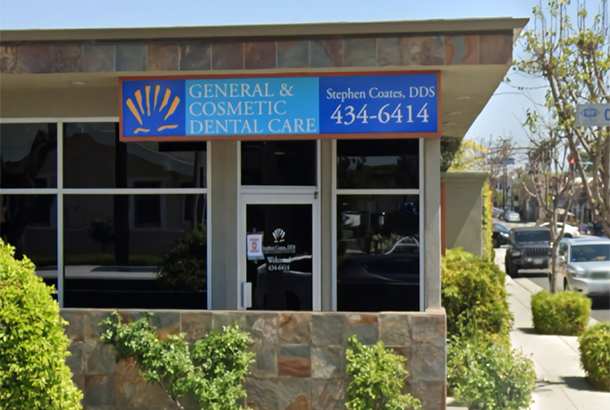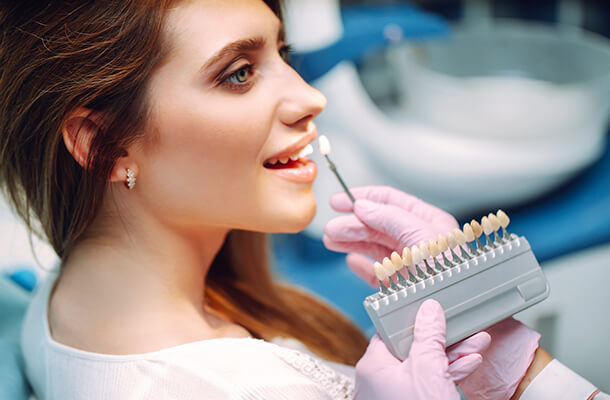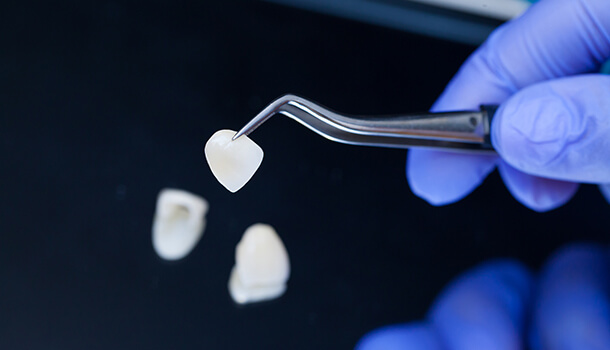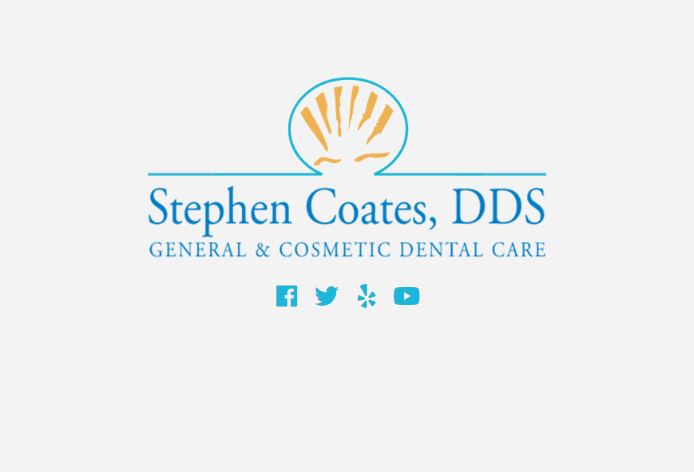Are you seeking to brighten or change the whiteness of your teeth? There are numerous cosmetic dentistry solutions available. Whether you want to whiten your teeth at home, visit Stephen Coates DDS (Doctor of Dental Surgery) for professional teeth whitening or use Veneers or Lumineers, there are options to suit every budget.
Teeth whitening, also referred to as tooth bleaching, is one of the most sought-after cosmetic dental procedures. Not only does it lighten your teeth but it can also boost your confidence levels.

1. How to Whiten Your Teeth
If you’re seeking to whiten your teeth and achieve a brighter smile, cosmetic dentistry is an excellent solution. It can address issues such as gaps between teeth, chipped or stained teeth, and discolored fillings.
Teeth whitening is the most widely-used cosmetic dentistry procedure to lighten discolored, stained or yellowing teeth. The treatment is safe, inexpensive and usually successful for most individuals.
Your dentist can perform teeth whitening in either their office or at your home, with results varying depending on the type of system chosen. They will assist in selecting the most suitable system for you and explain how to care for them afterward.
Some people have attempted to whiten their teeth at home using store-bought strips or trays, but these products don’t provide the same effectiveness as professional products. Furthermore, they may cause gum irritation and aren’t designed specifically for your teeth.
Another option for brightening your smile is veneers. Veneers are made from thin shells of porcelain or composite resin and attached to the front teeth in order to conceal cracks, chips, discoloration and other imperfections. Veneers may be an effective way to correct minor irregularities in your smile and may last longer than other methods as well.
Porcelain veneers are widely regarded as the ultimate smile makeover solution, as they can correct a wide variety of issues and offer one of the most dramatic improvements to your smile. Plus, these long-lasting solutions can be custom-shaped to meet your desired aesthetic goals. Porcelain veneers offer several advantages over other options when it comes to smile makeovers: durability; long lifespan; long-lasting results that last over time
A whiter smile can boost your self-confidence and aesthetic appeal, which in turn has a beneficial effect on other areas of life such as job interviews, social activities, dating, or even increasing self-esteem.
Cosmetic dentistry is not typically covered by most insurance plans, so many patients opt to pay out of pocket for the procedures they desire. Though costs vary between procedures and can be high, the results are worth it in the end.

2. Choosing the Right Tooth Whitening System
When it comes to teeth whitening, there are plenty of options – from over-the-counter kits to professional treatments. Ultimately, which option is best for you depends on your personal preferences and budget.
Over-the-counter teeth whitening kits typically consist of adhesive strips that need to be worn for 30 minutes a day or night, providing some whitening of about one or two shades. Unfortunately, they’re less effective than in-office systems and could damage your enamel – a major contributor to discoloration.
Gels are another option for teeth whitening. They can be used with or without trays and use peroxide-based ingredients to bleach stains away. Results take several weeks to appear, but on average they lighten your teeth by about one or two shades.
Teeth whitening pens offer a convenient, on-the-spot way to whiten your teeth. While they’re easier to use than gel or tray systems, they cannot effectively bleach out deeper stains from beneath your enamel, so in-office systems will provide more dramatic outcomes.
Tray-based whitening systems, available either over the counter or from your dentist, involve filling a mouth guard-like tray with gel that contains peroxide bleaching agent. They offer an affordable alternative to in-office treatments and can be used at home for several weeks.
Though these at-home solutions can be effective, they usually produce results more slowly than in-office systems and require frequent trips to your dentist to guarantee that the mouth guard fits correctly. Furthermore, you must be mindful not to consume or drink staining foods or drinks which could make treatment less successful.
If you’re worried about using a peroxide-based product, opt for one that uses essential oils like lemon peel oil and coconut oil instead of traditional chemicals. These can help whiten your teeth without exposing you to potentially hazardous ingredients found in peroxide-based solutions.
When seeking professional whitening treatment, search for a dental practitioner who is an AACD member. They should be up-to-date on the newest whitening technology and have sufficient experience performing these procedures. Furthermore, they should listen attentively to your concerns and be willing to customize a plan that meets your individual requirements.

3. Taking Care of Your Teeth After Whitening
After teeth whitening, they become more vulnerable to staining and decay, so it’s essential that you take good care of them. That means brushing regularly, flossing daily and visiting the dentist for regular check-ups.
After teeth whitening, it’s essential to steer clear of certain foods and drinks which could stain them. These include coffee, wine, sodas, tomato sauce, dark berries and catsup.
If you must consume these items, rinse your mouth with water and brush your teeth immediately afterward to minimize their stain and decay-causing effects on your white smile. Chewing sugar-free gum also prevents stains and decay while keeping your pearly whites brighter for longer.
The temperature of food or drinks you consume after having teeth whitening treatment can have an impact on their brightness. As a general rule, avoid anything hot or cold for 48 hours after treatment – particularly if you have sensitive teeth.
If you must consume something, consider drinking it through a straw to minimize contact between your teeth and liquid. As temperatures change, stains on teeth may expand and contract more, increasing their likelihood of penetrating into your enamel.
Another thing to keep in mind is that if you are sensitive to temperature changes in food, drinks or oral hygiene products, opt for lukewarm. Additionally, using a toothpaste specifically designed for sensitive teeth can alleviate discomfort and sensitivity in your mouth.
One of the biggest mistakes people make after teeth whitening is eating and drinking the wrong kinds of foods. This can lead to stains, tooth decay and other dental issues.
It is best to avoid a variety of foods and drinks, such as coffee, tea, chocolate, red wine, tomato-based sauces, pasta sauce, dark berries and catsup. All are highly pigmented and can discolor your teeth; thus it’s best to stay away from them until after whitening has become an established part of your routine.
Maintain an oral care routine that includes brushing twice daily with fluoride toothpaste, flossing daily and visiting the dentist at least twice a year for professional cleanings. Doing this will help keep your newly white smile looking its best for years to come.

4. Getting the Most Out of Your Whitening Treatment
Teeth whitening is one of the most sought-after cosmetic dentistry procedures, and it doesn’t have to be difficult or expensive.
Teeth are typically white, but over time they may become discolored and yellow due to various factors like age, smoking, and the foods and drinks we consume.
In addition to external causes, teeth can develop intrinsic stains from our bodies’ natural processes. This type of staining takes place in the enamel layer – the top layer – where millions of microscopic cracks form during chewing, providing space for dirt and stains to accumulate.
Over time, these stains can dull and discolor teeth if left unchecked. Teeth whitening helps to erase these marks and restore your smile’s original hue – which is why it has become so popular with our Princeton, NJ patients!
At Summit Dentist, we offer a range of dental whitening solutions tailored to fit your individual needs. These include in-office tooth whitening, take-home kits with bleaching gel, and combinations of both.
In-office whitening is a process where we apply a concentrated peroxide solution directly onto your teeth and leave them on for some time. Results can be seen immediately, usually within an hour after application – providing dramatic improvements!
Some in-office whitening treatments also utilize ultraviolet light, which has been known to whiten teeth up to eight shades faster than hydrogen peroxide alone. This technique is ideal for patients who want the most out of their whitening treatment.
In-office whitening is the safest and most efficient way to whiten teeth. Plus, it’s quick and affordable too!
Zoom teeth whitening is an incredibly popular in-office whitening solution that promises up to eight shades in just one appointment! Not only is it quick and painless, but most importantly – safe!
The dentist will begin the whitening process by brushing away any plaque or tartar on your teeth, followed by applying fluoride paste for reduced sensitivity and protection from damage. Next, they apply Zoom whitening gel on top of those surfaces using a special light which activates the active ingredients within it to eliminate surface stains. After three 15-minute sessions, you should be able to notice an amazing difference in your smile!
